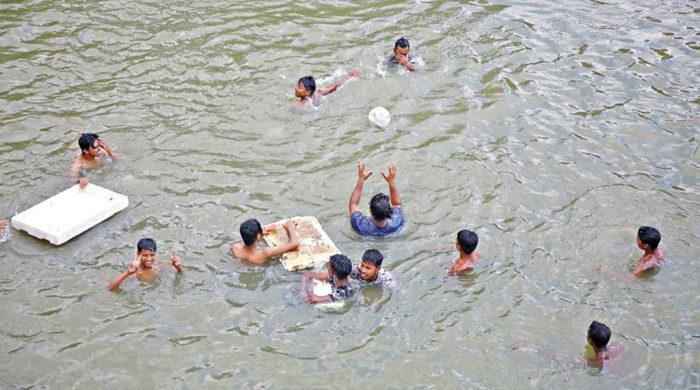New heatwave likely from this week

- Update Time : Saturday, May 11, 2024
- 25 Time View

A fresh heatwave is likely to start this week with a gradual decrease in rainfall and an increase in day temperatures over the next few days, the Bangladesh Meteorological Department warned on Friday.
‘Day temperatures across Bangladesh are likely to rise from May 14,’ said meteorologist Shaheenul Islam.
On Friday, Bangladesh’s highest day temperature of 35.3C was recorded in Mongla.
In Dhaka, the day temperature peaked at 34.8C on Friday.
The news of a fresh heatwave is the last thing Bangladesh’s ordinary people want, for it severely affects their income and production.
In its monthly outlook, the BMD predicted more than one mild to severe heatwave to sweep the country in May.
The potential heatwave is separated by about a week from the country’s longest-ever heatwave, which lasted for 37 days between March 31 and May 6.
During the heatwave, the country’s highest day temperature of 43.8C was recorded in Jashore on April 30, the hottest day in over three decades.
Districts such as Chuadanga and Jashore saw day temperatures stay at 40C or above for almost three weeks between mid-April and early May.
Day temperatures frequently exceeded 40C in Dhaka, which saw its peak at 40.5C on April 30, the second hottest day in the capital in the past 64 years.
The heatwave ended with the latest wet spell beginning on May 2. The prolonged heatwave killed 15 people, according to official accounts, between April 22 and May 5.
The weather was so hot and dry that there was almost no rainfall recorded over the period in most of Bangladesh.
In the 24 hours until 6:00pm on Friday, Bangladesh’s highest rainfall of 23mm was recorded in Sylhet.
The intensity of rainfall had already decreased after the latest wet spell brought about 100mm of rainfall over vast areas.
A Kalboishakhi warning, however, remains in place today.
Over 50 per cent of all Kalboishakhis occur during the monsoon, followed by 38 per cent occurring in pre-monsoon, 8 per cent in post-monsoon and 3 per cent in the winter months.
Between May 2 and 4, Kalbaishakhis killed at least 24 people, causing lightning and hailstorms.
The BMD said in its bulletin on Friday that thundershowers accompanied by squalls are likely in many places across the divisions of Dhaka, Khulna, Barishal, and Chattogram and at a few places in the rest of the country.
May is the last month of the three-month-long pre-monsoon season, the hottest season.
The BMD revealed in its latest report titled ‘Changing Climate of Bangladesh’ that the maximum temperature in the pre-monsoon months rose between 1980 and 2020.
The report showed that parts of the northern, south-western, and south-eastern regions are especially prone to warmer days in the pre-monsoon season.
South-western and south-eastern regions became particularly hot in the pre-monsoon season between 1980 and 2020, according to the report.
The minimum temperature, on the other hand, in the pre-monsoon season over the studied period rose significantly in parts of central and northern Bangladesh, the report said.
The report said that Dhaka division’s minimum temperature rose by 0.4C in the pre-monsoon season while the maximum temperature rose by 0.1C.
The highest rise in maximum temperature of 0.5C in the pre-monsoon season was recorded in Sylhet, followed by a 0.3C rise in Chattogram and a 0.2C rise in Barishal and Khulna, the report said.
The report showed that the pre-monsoon season grew rather drier with less rain between 1980 and 2020, with a decrease of 2.7 days in the number of rainy days every decade.
Parts of the northern region in Rangpur saw a significant drop in rainfall, while parts of the south-western, central, and south-eastern regions saw a significant fall in mean daily precipitation in the pre-monsoon season over 1980–2020.

























